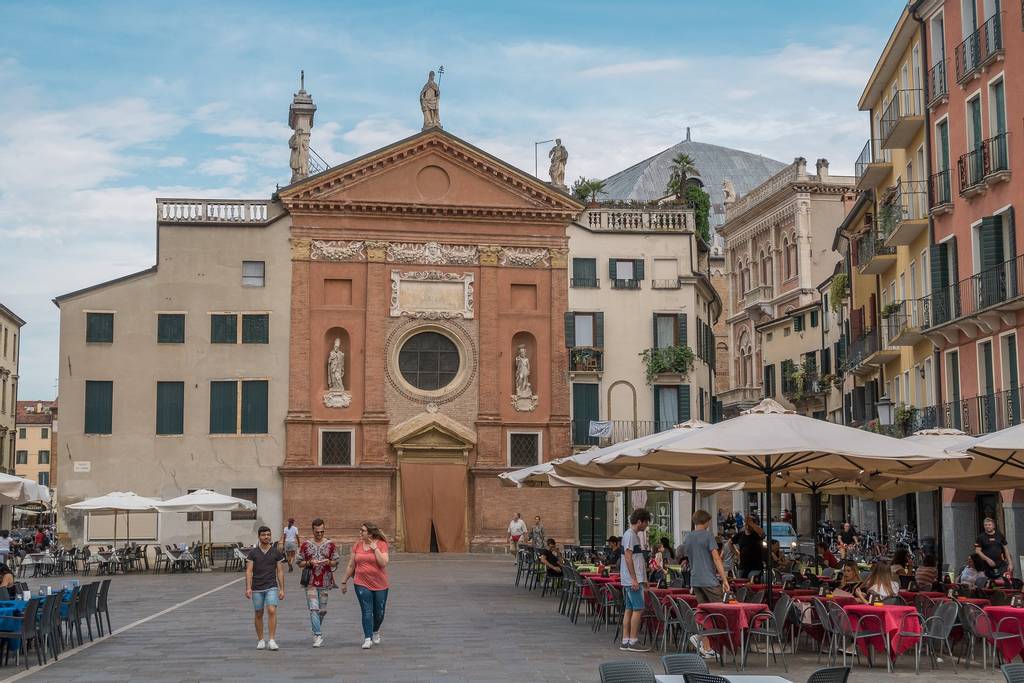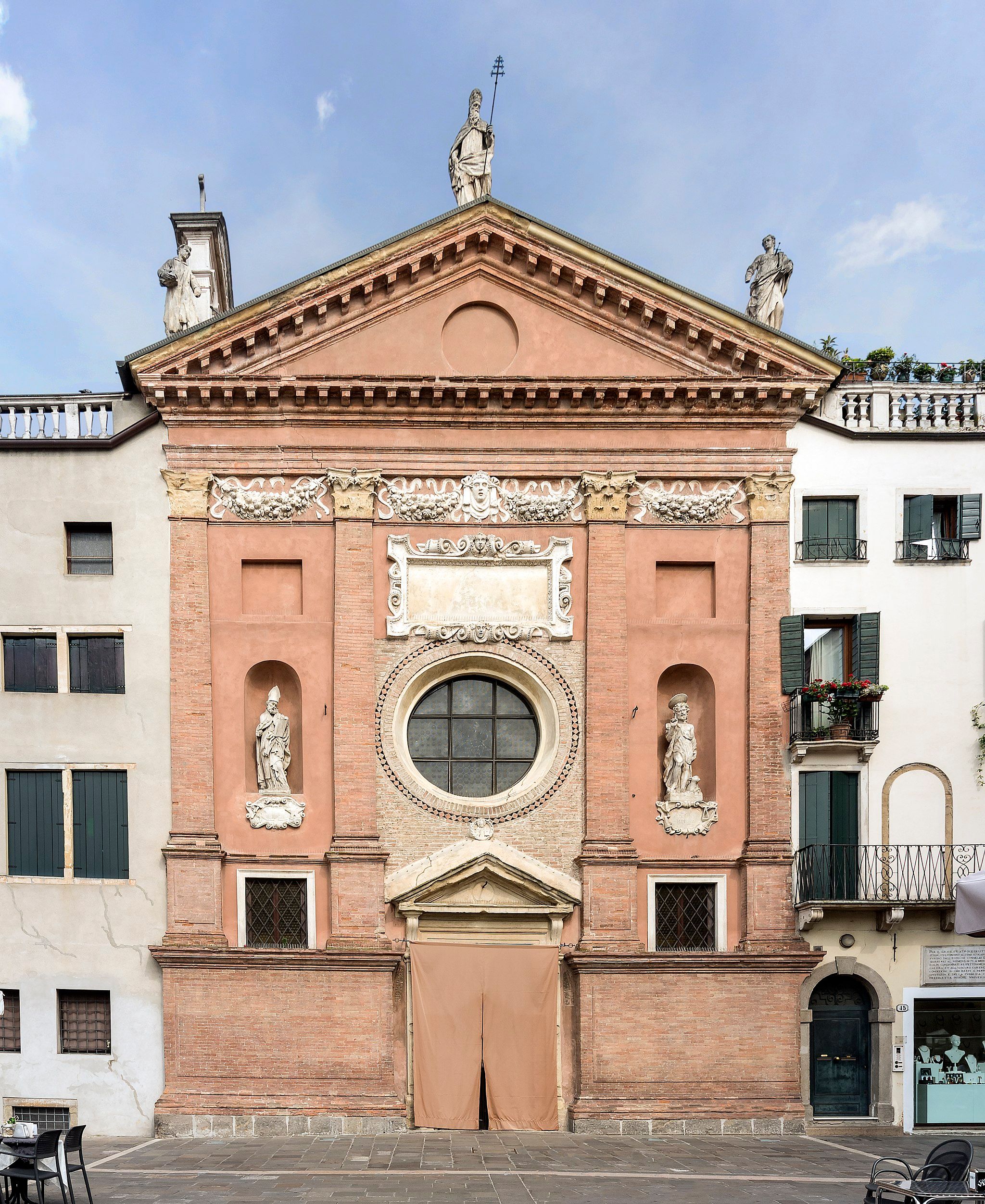Church of San Clemente
The Church of San Clemente is a small Baroque-style Roman Catholic church with an ancient history overlooking the Piazza dei Signori.

According to age-old lore, the church was donated to the city in the fifth century, by the Paduans who had left the city and established the communities of Rivoalto (or Rialto) and Dorsoduro, now part of Venice.
The Church of Saint Clement was first formally mentioned in 1190. In the fourteenth century, it was elevated to a parish. Nowadays is a filial church of the Cathedral Basilica of Santa Maria Assunta.
Housed on the east side of Piazza dei Signori, the small church is flanked by the two streets, Via San Clemente and Via Fiume, leading to Piazza della Frutta and Piazza delle Erbe, respectively.
The church is attached on three sides to the adjacent buildings. The terracotta facade is defined by four large pilasters with a large rose window in the centre above the entrance. On the sides, two niches house the statues of Saint Eligio on the left and Saint John the Baptist on the right. Above the large tympanum are the seventeenth-century statues of Saint Clement, Saint Justine and Saint Daniel.
The simple interior is structured in a single nave with a square apse. Next to the entrance is the Madonna and Child fresco by Jacopo Bellini, one of the founders of the Renaissance style of painting in northern Italy and the father-in-law of Andrea Mantegna. On the right wall is a seventeenth-century painting by Pietro Damini depicting Jesus in the act of delivering the keys to Saint Peter.
We welcome all contributions, no matter how small. Even a spelling correction is greatly appreciated.
All submissions are reviewed before being published.
Continue to changelog-

© 'Church of San Clemente in Padua - Facade on Piazza dei Signori' by Didier Descouens is licensed under CC BY-SA 4.0 Attribution copied to clipboard Failed copying attribution to clipboard
We welcome all contributions.
All submissions are reviewed before being published.
We welcome all contributions, no matter how small. Even a spelling correction is greatly appreciated.
All submissions are reviewed before being published.
Continue to changelogWe welcome all contributions, no matter how small. Even a spelling correction is greatly appreciated.
All submissions are reviewed before being published.
Continue to changelogWe welcome all contributions, no matter how small. Even a spelling correction is greatly appreciated.
All submissions are reviewed before being published.
Continue to changelogCategory
Cost
-
56 m
Piazza dei Signori is an elegant open square surrounded by monumental works, fulfilling the role of the grand living room of Padua.
-
The Palazzo della Ragione, built in the Middle Ages as the seat of the city courts, still hosts on the ground floor one of the oldest European markets
-
A true miracle of architectural audacity and an impressive collection of fourteenth-century mural paintings, the only secular and civil commission executed by Giotto in Padua
-
92 m
One of the beautiful Venetian buildings surrounding the square of Piazza dei Signori is Loggia del Consiglio, an outstanding example of the architecture of the 15th and 16th centuries.
-
92 m
Piazza della Frutta, once called Piazza del Peronio, has been the commercial heart of Padua for centuries.

